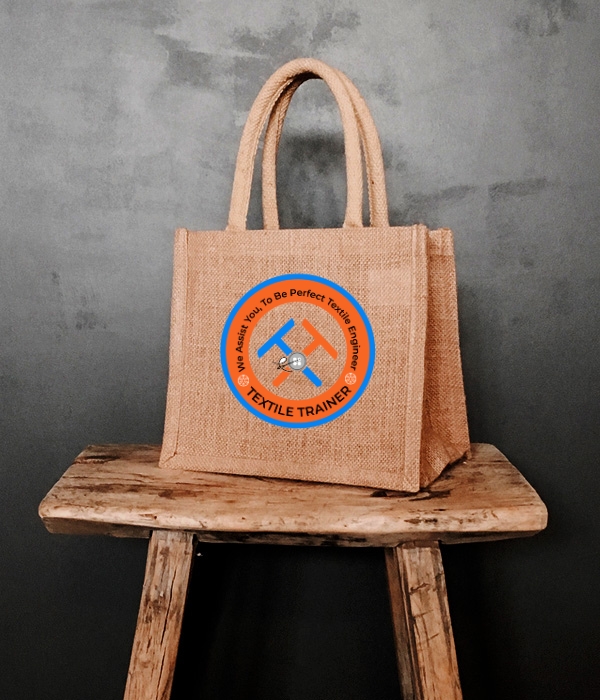What is Diversification of Jute?
There has been more effort put into the diversification of jute products to counter the challenges that are being faced by cheaper synthetic substitutes. Jute has been widely experimented in order for jute based products to be developed for the textile industry. The main trust areas of value-added diversified jute products include handlooms, handicrafts, nonwovens, and industrial products, rigid jute packaging, decorative and ornamental products, and geo-jute. There has been a huge number of new and innovative products developed with high value-added, such as home textiles, jute composites, jute geotextiles, paper pulp, technical textiles, chemical products, handicrafts, and fashion accessories. In general, these products are referred to as Diversified Jute Products because of the fact that they are used in new, alternative, and non-traditional ways. Increasing plastic pollution has prompted the need for sustainable alternatives. Jute fiber is becoming increasingly popular as an eco-friendly material. In various industries, jute products have emerged as a sustainable alternative to plastic due to their remarkable properties and versatility. A natural fiber made from the jute plant, jute is considered to be the “golden fiber” due to its unique combination of strength, durability, and biodegradability.
Throughout this article, we will explore the world of diversified jute products and discover how they have become eco-friendly alternatives to plastic. This article will discover jute fiber’s exceptional characteristics and its applications across many industries. With its growing demand for environmentally responsible alternatives to plastics, jute offers an environmentally conscious alternative to packaging, textiles, construction, and household products.
Diversified Jute Products:
Today, we use plastic in a different way. If we use the following jute products, that will reduce the amount of pollution that is caused by plastic in the environment. Listed below is a jute product that we can use as an alternative to plastic in the future.
Canvas:
A canvas made from jute fiber is an excellent eco-friendly alternative to plastic in various applications. Jute, a natural fiber from the jute plant, is a sustainable choice for canvas production due to its unique properties. We can contribute to a greener future by reducing our dependence on plastic-based materials by creating a canvas with jute fiber. Jute grows quickly and requires minimal chemical inputs to cultivate, unlike plastic. Because of this, jute canvas can be used in home décor and upholstery as a substitute for plastic, making it an environmentally friendly option. It also helps to reduce carbon emissions and uses less non-renewable resources. It can be used to create curtains, cushion covers, and wall hangings, adding a touch of natural elegance to living spaces. Furniture can be made more environmentally friendly with jute canvas upholstery, reducing synthetic materials’ use.

sacking Cloth:
A sacking cloth made from jute fiber offers a compelling alternative to plastic in a wide range of applications. Jute fiber, a natural fiber derived from the jute plant, offers unique properties that make it a sustainable and eco-friendly fiber choice. Sacking cloth made from low quality jute fibers is loosely woven heavy cloth used for packing sugar, food, grains, cement, etc. weighing from 15-20 ozs, several qualities are available such as twill, hycees, D.E flocer, cement bags and many others.
Hessian Cloth:
Hessian cloth is a plain woven high quality jute fabric, weighing between 5 to 12 ounces per yard. It is widely exported throughout the world as clothing, bags, and other items. A variety of uses exist for this fabric, often referred to as burlap, which is widely used for a wide range of purposes. A multitude of uses exist for hessian cloth as a plastic alternative. It is often used in agriculture to control erosion, suppress weeds, and protect young plants. The robust and breathable nature of Hessian bags make them an ideal alternative to plastic bags for packing goods like coffee beans, potatoes, and grains.
D.W. Tarpaulin:
The tarpaulin, commonly referred to as the tarp, is a versatile and durable covering for protecting against weather conditions, dust, and debris in a variety of industries. Plastic tarps have traditionally been made, but they pose significant environmental challenges since they cannot degrade. As an alternative to plastic tarps, D.W. (Double-Warp) Tarpaulins have been developed using jute fiber as a sustainable material.
Jute Bags:
As an eco-friendly and sustainable alternative to plastic bags, jute bags offer both functionality and environmental benefits. Natural fibers, such as jute, are derived from the jute plant. The strength and durability of jute fiber makes it well suited to making durable, sturdy bags. For a variety of purposes, jute bags are practical because they can withstand heavy loads and frequent use. Whether used for grocery shopping, carrying personal belongings, or as fashion accessories, jute bags are a sustainable alternative to single-use plastic bags.

Hydrocarbon Free Jute Cloth:
An eco-friendly alternative to plastic is hydrogen-free jute cloth, also known as hessian fabric. A natural fiber derived from the jute plant, jute cloth, is treated with vegetable oil to make it free of hydrocarbons in this innovative cloth. The use of plastic to package various food materials has been widely followed. However, plastic pollution has adversely affected the environment, making the search for sustainable alternatives increasingly important. In order to make jute cloth a safe and non-toxic packaging material for food products, vegetable oil must be sprayed on it.
Geo-textile:
Geo-textiles are versatile materials that are commonly used in various civil engineering and environmental applications. Many of them serve as an environmentally friendly and sustainable alternative to plastic-based materials. Synthetic fibers are used to manufacture geo-textiles, and they have a specific set of mechanical and physical properties that fit different applications. Biodegradability and reduced environmental impact are significant advantages of geo-textiles over plastic materials. For hundreds of years, plastic-based materials can persist in the environment, contributing to pollution and posing a threat to ecosystems. Contrary to this, geo-textiles can be engineered to degrade over time to minimize their environmental impact.

Scrim Cloth:
Compared to plastic, scrim cloth made of jute has many advantages in terms of environmental sustainability and versatility. In addition to its strength, durability, and eco-friendliness, jute is a natural fiber derived from the Corchorus plant. Using jute fibers to make scrim cloth reduces our dependence on plastic and helps the environment. A scrim cloth is a lightweight hessian fabric used in felt industries for reinforcing non-woven fabrics and laminating paper.
Tobacco Sheets:
In recent years, tobacco sheets crafted from jute have gained considerable attention as an environmentally friendly alternative to plastic. Textiles and packaging materials are traditionally made of jute fibers, a natural fiber derived from the jute plant. As a sustainable solution to the global plastic pollution crisis, innovative uses of jute, such as making tobacco sheets, have emerged.
Decorative Items:
The use of jute, a natural fiber derived from the jute plant, as an alternative to plastic for decorative items is becoming increasingly popular. With their intricate designs and handcrafted appeal, jute wall hangings bring a rustic charm to any living space. The wall hangings combine seamlessly with different interior styles and are an environmentally conscious alternative to plastic wall decor. Besides being eco-friendly, jute planters and baskets are ideal for displaying plants or organizing small items. Thanks to their sturdy construction and natural aesthetics, they can be used both indoors and outdoors.

Jute Bottles and Cups:
The eco-friendly alternative to plastic containers are jute-based bottles and cups. They are made from a combination of jute fibers and biodegradable materials, providing a sustainable way to store and drink drinks. Plastic waste can be minimized by using jute bottles and cups that can be reused or decomposed easily.

Jute Stationery:
The jute-based stationery products, such as notebooks, folders, and pen holders, can serve as sustainable alternatives to plastic-based stationery items. When it comes to writing and organizing, these eco-friendly alternatives are often made from recycled jute fibers or recycled jute paper, making them a more environmentally friendly choice.

Conclusion:
Many industries and applications use jute as an eco-friendly alternative to plastic products. The natural fibers of jute provide sustainable options to minimize our reliance on harmful plastics, from bags and packaging materials to clothing and home décor. By embracing natural materials and reducing plastic waste, jute is a more sustainable alternative to plastic. Collectively, we can work towards a greener and cleaner world by making conscious decisions in our purchases and daily habits.






